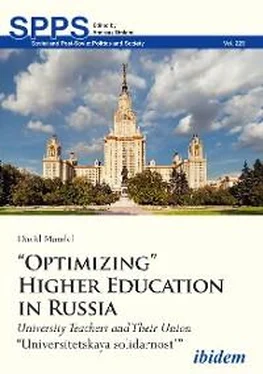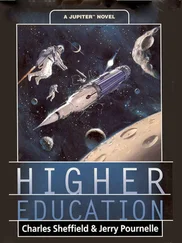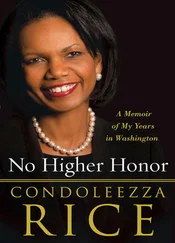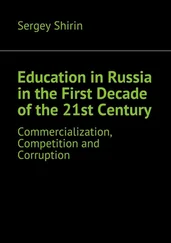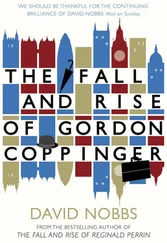“When I began my career as a sociologist, I was impressed by the words of the director of one of Penza’s most successful factories, where problems not only relating to production but social questions, too, were resolved so well.
When I asked him how he managed that, he replied: ‘You can’t make people happy by deciding for them and without them what they need.’ Well, this education reform has been marvelously conducted without the teachers. Who needs them? Bureaucrats know themselves what people need. And so, all commands flow from above, fertilized by the grant-consumers that they finance, who churn out a vast amount of recommendations, norms, rules and standards in order to justify their existence.
Many of these energetic bureaucrats have not themselves experienced their teachings and methods. But they consider it possible to impose them on others. This reforming began, and is being continued, without any counsel from those who do the teaching.
In fact, we see before us a complete disregard for the teaching community. And the tendency not to consult the mass of teachers is also evident in the universities, where practices are far from any elementary respect of democratic principles. Teachers’ meetings to discuss matters, relating not only to teaching, but to any issue of university life, have ceased to occur.” 43
The practical application of these reforms and their impact on the condition of university teachers are the subject of the following chapter.
1M. Matthews, Education in the Soviet Union: Policies and Institutions since Stalin , London: George Allen & Unwin, 1982, p., 147. A certain decline in the relative remuneration of academic staff began in the 1970s. A. Smolentseva, “Challenges to the Russian Academic Profession,” Higher Education no. 45, 2003, p. 409.
2An “academic hour” is 45 minutes.
3Mining was one of the highest paid professions (outside of the nomenklatura), and the nickel miners of Norilsk also received a hefty northern supplement.
4V. Afanas’eva, “Pyat’ prichin po kotorym ne sleduet stat’ professorom,” Komsomol’skaya pravda , Mar. 20, 2017, https://www.kp.ru/daily/26655.5/3676180/(accessed Aug 21, 2018)
5D. Platonova, D. Semyonov, “Russia: the Institutional Landscape of Higher Education,” in J. Huisman et al., ed, 25 years of Transformations of Higher Education Systems in Post-Soviet Countries , Palgrave Macmillan, London, 2018, p. 1.
6 Prosveshchenie— literally “enlightenment.”
7A. Smolentseva, “Where Soviet and Neoliberal Discourses Meet: the Transformation of the Purposes of Higher Education in Soviet and Post-Soviet Russia,” Higher Education , December, 2017, pp. 1096, 1098.
8For a useful overview of the institutional changes in higher education in Russia since the end of the USSR, see D. Platonova and D. Semyonov, “Russia: The Institutional Landscape of Russian Higher Education,” in J. Huisman et al. (eds.), 25 years of Transformations of Higher Education Systems in Post-Soviet Countries, Palgrave, London, 2018.
9“Likhie”—literally “dashing” or “daring.” But in this case, “wild” seems more appropriate.
10On primitive accumulation and the resulting nature of the state in Russia, see D. Mandel, “Primitive Accumulation in Post-Soviet Russia,” M. Vidal, et al. eds., The Oxford Handbook of Karl Marx, Oxford University Press, N.Y., 2019, pp. 739-54.
11J. Stiglitz, Globalization and its Discontents , W. Norton, N.Y., 2002, ch. 5.
12Banque européenne de reconstruction et de développement, Rapport 1998 , cited in E. Kniazev, “Les problèmes nouveaux posés par la gestion d’une université russe,” Politiques et gestion de l’enseignement supérieur , vol. 14, n° 1, 2002, p. 121; T. Klyachko and I. Rozhdestvenskaya, Obrazovanie , Institut perekhodnogo perioda, Moscow, 1999, p. 4.
13A. Smolentseva, “Challenges to the Russian academic profession,” Higher Education , 45: 2003, p. 397.
14For a discussion of this issue, see A. Kosmarksii, “Universitety stali gibridom patriarkhal’nhykh demokratii s prepriniamtel’skikh avtokratiyamy: sotsiolog Mikhail Sokolov o tom, kak ustroena vlast’ v rossiiskikh vuzakh,” Indikator, Sept, 25, 2018, https://indicator.ru/humanitarian-science/intervyu-mihaila-sokolova.htm. (accessed Aug 21, 2019)
15A. Smolentseva, op. cit. 409
16Platonova and Semyonov, p. 344. In 2,000, 4,741 million students were enrolled in higher education, as compared to 2,790 million in 1995. In the state system alone, one third were by then paying tuition. A. Smolentseva, “Universal Higher Education and Positional Advantage: Soviet Legacies and Neoliberal Transformations in Russia,” Higher Education , vol. 73, no. 2, 2016, p. 21; Obrazovaniye v Rossiiskoi Federatsii: 2010 , Moscow: Vysshaya shkola ekonomiki, p. 102.
17See the section 3.e below.
18J. Zadja, “Educational Reform and Transformation in Russia,” European Education , vol. 35, no.1, 2003, p. 69.
19An significant exception in this period was the revolt of the students in the Faculty of Sociology of Moscow State University in 2007, in which the main issue was the low quality of education offered. See, Initsiativa gruppa Sotsfaka MGU “OD Group”(2007-2008 ), http://chronicles.igmsu.org/odgroup/.
20Concern over a possible “return of the Communists” was a major concern of government leaders in the 1990s.
M. Goldman, The Piratization of Russa , N.Y., Routledge, 2003, p. 75.
21N. Forrat, “The Political Economy of Russian Higher Education: Why Does Putin Support Research Universities?” Post-Soviet Affairs , 2015, vol. 32 no. 4, 2016, p. 12; B. Saltykov, ”Enseignement supérieur en Russie”, Russie. Nei. Visions, no. 29, Apr. 2008, p.16; C. Sigman, “Retour de l’État et formes de domination en Russie”, Revue française de science politique , vol. 66, 2016, p. 923.
22 OECD Country note ( http://www.oecd.org/education/Russian%20Federation-EAG2014-Country-Note.pdf(accessed June 10, 2018)
23Forrat, op. cit., pp. 11-12
24A. Smolentseva, “Where Soviet and Neoliberal Discourses Meet,” Higher Education , 2017, Dec. 2017, Vol. 74, no. 6, p. 1100.
25L. Mazurova, “Potrebiteli’ nynche v defitsite?” Literaturnaya gazeta , no. 32, Aug. 8, 2007.
26C. Sigman, “‘Retour de l’État’ et formes de domination en Russie,” Revue française de science politique, no. 6, 2016, p. 925.
27I. Kurilla, “Education Reform in Russia,” Russian Analytical Digest , no. 137, 2013, p. 2.
28P. G. Altbach et al., ed., Paying the Professoriate a Global Comparison of Compensation and Contracts , Hoboken, N.J., Taylor & Francis, 2012, p. 30. M.A. Borovskaya et al., “Higher Education Institute Salary System as a Factor of Modernization of Education and Science in Russia,” World Applied Sciences Journal 30 (11), 2014, pp. 1678, 1680.
29S. Dobrynin, “Ortogonal’nhyi fitzekh,” Radio Svoboda, Dec. 6, 2015. https://inosmi.ru/science/20151206/234702542.html(consulted Apr. 5, 2020). For an international comparison of university teachers’ salaries that situated Russia at the end of the decade well down at the bottom of a list of 29 countries, see P. Altbach et al., Paying the Professorate , N.Y. Routledge, 2012.
30“V Moskve obsudili finansovuyu politiku Ministerstva obrazovaniya i nauki,” https://минобрнауки.рф/пресс-центр/11685 (accessed Aug. 8, 2018).
31Forrat, op. cit., p. 26.
32On new public administration in Russia’s universities, see C. Sigman, “La montée de l‘État-entrepreneur de l’enseignement supérieur’ et l’hybridation public-privé: l’exemple de la Russie,” Économies et sociétés , Cahiers de l’ISMEA , XLIV, no.4, 2010, pp. 581-602.
Читать дальше
